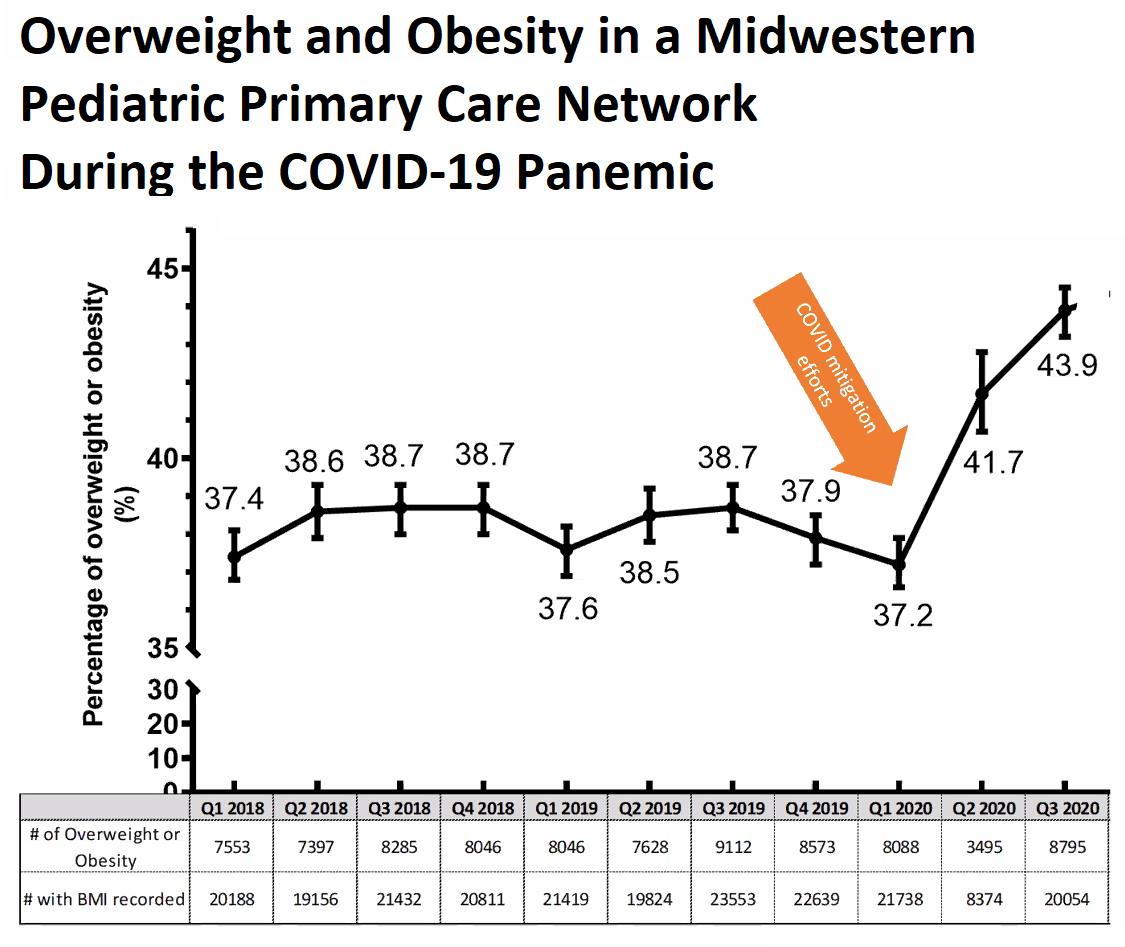
COVID-19, Obesity, and Children: From Risk to Reality
For some time now, speculation about the impact of COVID-19 on obesity risk in children has been plentiful. It makes sense. COVID has turned the lives of kids and their parents upside down. On top of that, models suggest childhood obesity rates could go up markedly. However, these were projections and speculation. So we have been cautious.
But now, we are starting to see some stark facts. At this week’s meeting of the National Academies Roundtable on Obesity Solutions, members offered a preview of data showing sharp increases in childhood obesity prevalence.
Unpublished Data
Up front, we must note that these are, as yet, unpublished data. And while we can freely share the content of Roundtable meetings, under Chatham House rules attributions are not possible. In other words, these observations are important, but we still take them with a grain of salt until they undergo review and publication.
 With all that said, the findings are striking and consistent with prior speculation. They come from a large midwestern pediatric primary care network. Prior to the pandemic, prevalence of overweight and obesity was more or less stable in this network – between 37 and 39 percent. However, by the third quarter of 2020, that prevalence had jumped to 44 percent.
With all that said, the findings are striking and consistent with prior speculation. They come from a large midwestern pediatric primary care network. Prior to the pandemic, prevalence of overweight and obesity was more or less stable in this network – between 37 and 39 percent. However, by the third quarter of 2020, that prevalence had jumped to 44 percent.
These data come from electronic medical records. And of course, they have limitations. But even with due diligence to correct for these limitations, the observation remained consistent. In a cohort of patients followed across this time period, the data showed similar increases.
Uneven Risks
Furthermore, the data showed that risks were not the same for all of these youth. Youth who already had overweight and obesity were more vulnerable to further weight gain. Older youth (10-17 years), females, and Hispanic youth were likely to gain more weight.
One factor in weight gain for youth during the pandemic might be declines in physical activity. Various reports tell us that these changes can be different for different individuals. Nicole Fernbach et al report that income is an important predictor for declines in physical activity in adults. Genevieve Dunton et al suggest that older children may be more at risk than younger children.
Particular Risk for Children with Obesity
Data from the Roundtable point to higher risks for children with obesity. In more human terms, a new paper from Nancy Brown et al describes it well:
“Schools closed and children lost the safety net of access to nutritious food, a safe place to be, and mandatory physical activity as well as their social networks and familiar routines. Potential consequences of being restricted to home, as addressed in this clinical report, threaten the health and well-being of children with obesity.”
We have a poor record of meeting the needs of children with obesity. The COVID pandemic presents a challenge to do better.
Click here for the paper from Brown et al, here and here for modeling of the effects of COVID-19 on childhood obesity.
Teddy Bear with a Mask, photograph © Nenad Stojkovic / flickr
Subscribe by email to follow the accumulating evidence and observations that shape our view of health, obesity, and policy.
February 6, 2021

February 06, 2021 at 6:45 pm, Bongo said:
When the restrictions are lifted and physical activity levels go back to what they were before then the obesity+overweight prevalence will return to the 37-39% that is was before.
Which tells us something rather interesting about the causes of weight related ill health in many children.
Oh, perhaps you disagree, and think the prevalence will go back down, but not back to the range it previously was. I will lay that bet up to 100USD.
February 07, 2021 at 4:33 am, Ted said:
I would be delighted to see a real drop in obesity prevalence. It would be something that has never been recorded before.